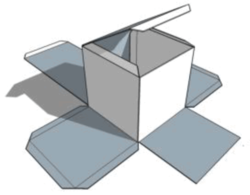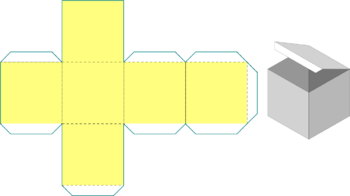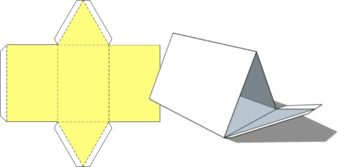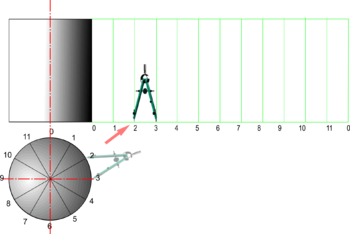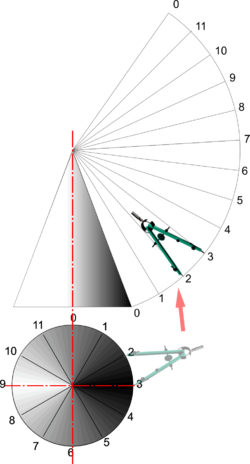Nets and Developments: Difference between revisions
From DT Online
mNo edit summary |
(Added internal link) |
||
| Line 24: | Line 24: | ||
* The development of a [https://en.wikipedia.org/wiki/Prism_%28geometry%29 '''prism'''] may start with rectangle of length equal to the sum of all sides and height equal to the prism length. | * The development of a [https://en.wikipedia.org/wiki/Prism_%28geometry%29 '''prism'''] may start with rectangle of length equal to the sum of all sides and height equal to the prism length. | ||
* Polygons of the same size and shape as the prism cross-section ''(triangles in this case)'' are then added to complete the net as shown. | * Polygons of the same size and shape as the prism cross-section ''(triangles in this case)'' are then added to complete the net as shown. | ||
---- | |||
<span style="color: green">'''Note:''' | |||
In this example, the triangles could be constructed using the prism sides as a base - see '''[[Basic Constructions]]''' | |||
</span> | |||
---- | |||
* An alternative is to start with the polygon and to each side add a rectangle of the same dimensions as the prism sides. | * An alternative is to start with the polygon and to each side add a rectangle of the same dimensions as the prism sides. | ||
* Using squared paper can be helpful when drawing nets and developments. | * Using squared paper can be helpful when drawing nets and developments. | ||
Revision as of 14:40, 23 February 2015
Nets and Developments are alternative names for the pattern you would need to cut out of a flat sheet to create a shape that can be folded up to form a 3 dimensional object.
Mathematicians tend to use the term ‘Net’ whereas engineers and technologists more commonly use the term ‘Development’ - perhaps because they wish to add details such as glue tabs to make sure the nets can be made in reality - but the two words are really synonymous.
| Cube |
|
|
| Prism | ‘
Note: In this example, the triangles could be constructed using the prism sides as a base - see Basic Constructions
|
|
| Pyramid |
|
|
| Cylinder |
|
|
| Cone |
Note: Pyramids may also be drawn more easily in this way. |
Note: Find some empty packaging and take it apart to see the real examples of ‘nets’ or ‘developments’ used to make them. Notice how and where they are joined so they hold together.
